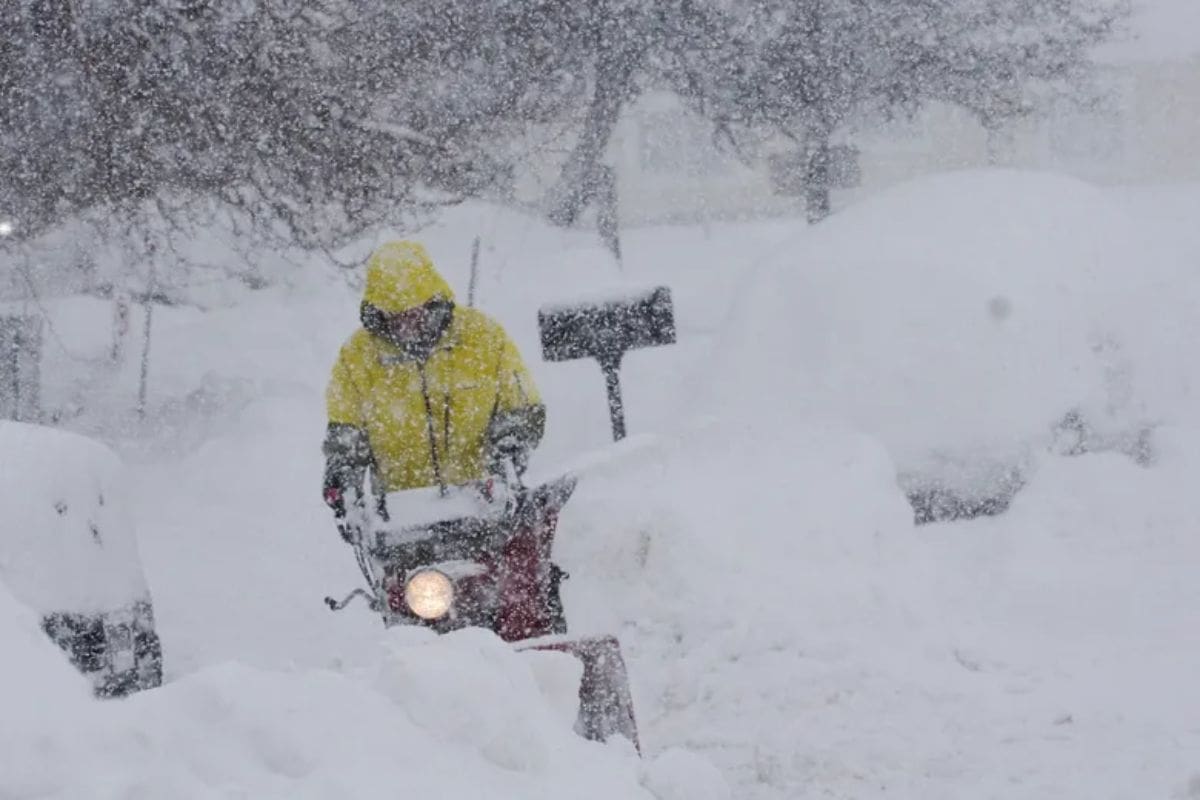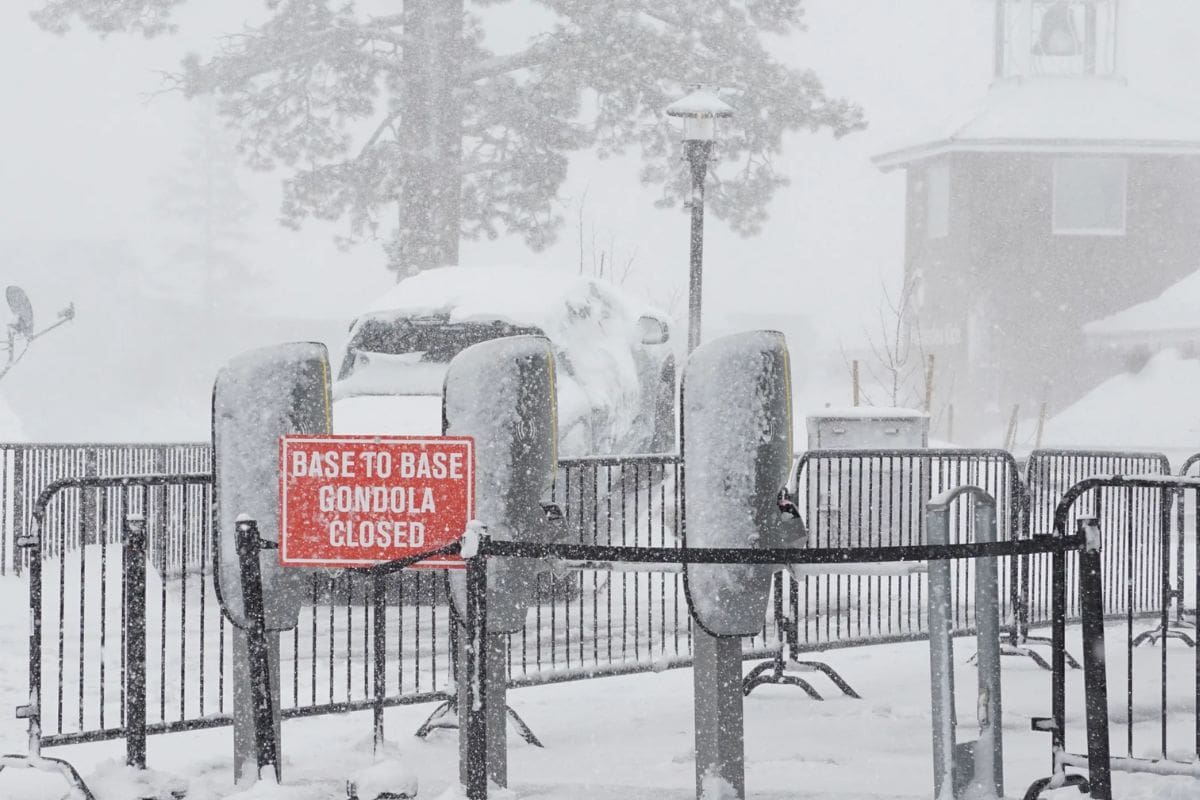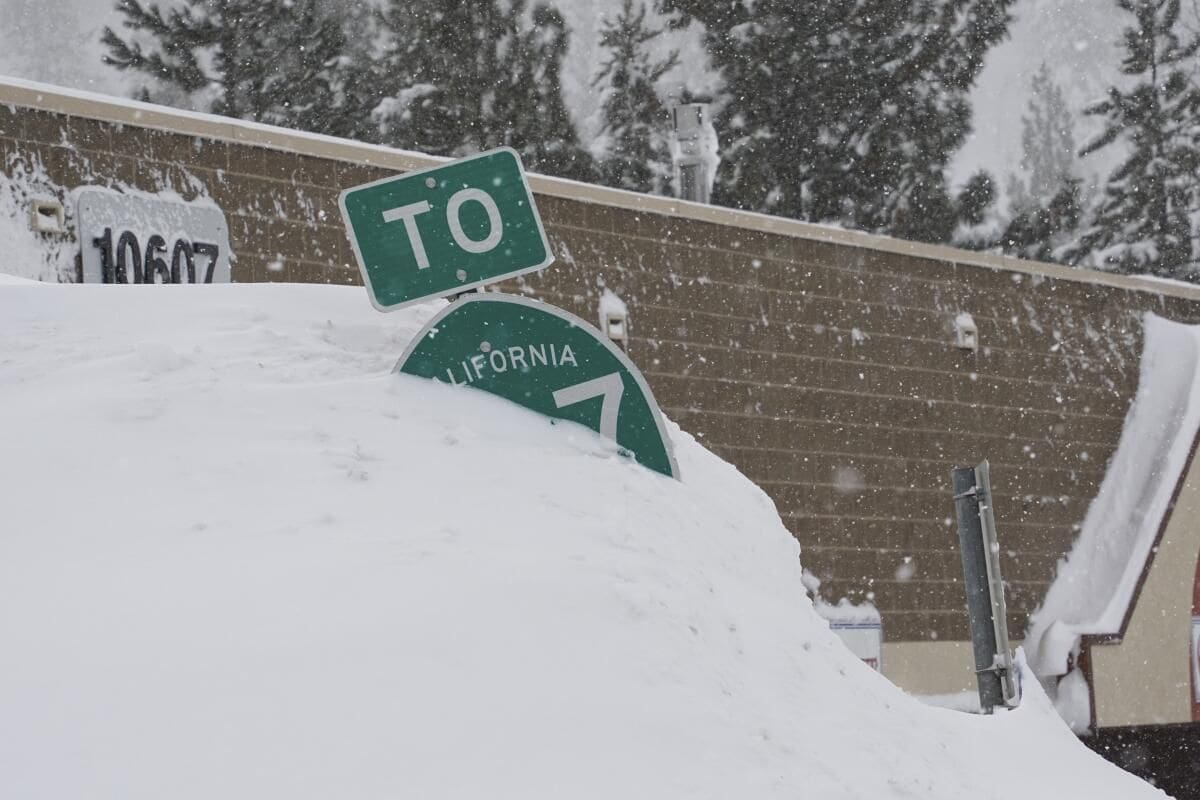Snow Alert Sierra Nevada: The Sierra Nevada region is currently under a snow alert as forecasts predict an incoming wave of mountain powder. The blizzard has already blanketed the area, leading to persistent road closures and posing a continued threat of snowfall.
The impact and disruptions caused by this weather phenomenon are significant, with ski resorts in the region struggling to maintain operations.
Stay tuned as we explore how residents and businesses are navigating these challenging conditions and what this means for the upcoming days.

Blizzard Blankets Sierra Nevada
The recent blizzard that swept through the Sierra Nevada region enveloped the landscape in a thick, white blanket of snow, disrupting normal activities and prompting closures of highways and ski resorts. This powerful storm brought with it heavy snowfall and strong winds, creating treacherous conditions for residents and travelers alike. The picturesque mountains transformed into a winter wonderland, but the beauty was accompanied by challenges as roads became impassable and outdoor recreational activities were put on hold.
The blizzard’s impact was felt across the region, with communities hunkering down to wait out the storm. Ski resorts, usually bustling with activity during this time of year, were forced to close their doors for the safety of guests and staff. Highways were blanketed in snow, leading to dangerous driving conditions and necessitating closures to prevent accidents. Despite the inconvenience caused by the blizzard, residents and officials were grateful for the much-needed snowfall in the drought-affected region.
Road Closures Persist
Persisting closures on sections of Interstate 80, west and north of Lake Tahoe, due to the heavy snowfall over the weekend have resulted in ongoing travel disruptions, necessitating heightened precautions for motorists. As over 7 feet of snow blanketed the mountainous areas, the closure of these crucial roadways has significantly impacted transportation in the region. The closure status remains indefinite, with authorities continuously monitoring the situation to determine when it will be safe to reopen the interstate.
To grasp the severity of the situation, consider the following table illustrating the current road closures in the Sierra Nevada region:
| Location | Status | Estimated Reopening Time |
|---|---|---|
| I-80 West | Closed | Indefinite |
| I-80 North | Closed | Indefinite |
Motorists are advised to equip their vehicles with tire chains for added traction, essential for navigating the treacherous roads. Additionally, staying informed about weather updates and road conditions is crucial for planning safe travel routes amidst the ongoing closures.

Continued Snowfall Threat
Despite the easing of blizzard warnings, the Sierra Nevada region faces the looming threat of continued snowfall, with the National Weather Service in Sacramento cautioning that an additional 2 feet of snow may accumulate at higher elevations. As the snow continues to fall, here are some key points to consider:
- Scattered Thunderstorms: While blizzard warnings have mostly ended, scattered thunderstorms are likely to accompany the ongoing snowfall, potentially affecting visibility and complicating travel conditions.
- Possible Accumulation: Another 2 feet of snow could accumulate at higher elevations, increasing the risk of avalanches and creating challenging conditions for outdoor activities such as skiing and snowboarding.
- Travel Disruptions: The continued snowfall poses a risk of further road closures and transportation, impacting both residents and travelers in the region.
- Preparedness: Residents and visitors should remain vigilant and prepared for the ongoing snowfall, ensuring they have necessary supplies and are updated on weather forecasts to stay safe during this period of heightened snowfall.
Impact and Disruptions
As the Sierra Nevada region contends with the aftermath of the multiday storm, the impact and disruptions have been widespread, affecting various sectors including transportation, tourism, and infrastructure. The storm triggered significant traffic disruptions, leading to road closures. Ski resort closures have been a major consequence, impacting winter tourism in the area. Moreover, power outages have been reported, affecting thousands of homes and businesses. Despite the challenges, efforts to restore power are currently underway to mitigate the disruptions caused by the storm.
The transportation sector has faced difficulties due to icy roads and reduced visibility, hampering both daily commutes and the movement of goods. In the tourism industry, the closures of ski resorts have led to disappointed visitors and financial losses for businesses that rely on winter sports. Additionally, the infrastructure has been strained, with reports of damage to roads and buildings. The community is working diligently to address these disruptions and get the region back on track after the storm’s impact.
Ski Resorts Struggle
Ski resorts in the Sierra Nevada region are facing significant challenges as they struggle to cope with adverse weather conditions, leading to prolonged closures and disruptions in operations. The recent storm brought a substantial three-day snow total of 6 feet to the area, causing prominent ski resorts like Palisades Tahoe to shut down chairlifts for a second day. This situation has created a tough environment for the resorts, impacting not only their revenue but also the overall skiing experience for visitors.
The struggles faced by ski resorts in the Sierra Nevada region are multifaceted and encompass various difficulties, including logistical hurdles and safety concerns. Here are four key issues exacerbating the ski resorts’ challenges:
- Safety Measures: Ensuring the safety of guests and staff in extreme weather conditions.
- Operational Delays: Managing in opening ski runs and facilities.
- Financial Impacts: Dealing with revenue losses due to closures and reduced visitor numbers.
- Infrastructure Maintenance: Addressing damage to infrastructure caused by heavy snowfall.


Also Read: California Colleges Experiment Earn Money While You Learn
News In Brief
Sierra Nevada Snow Alert: Blizzard Passes, More Snow Expected. A powerful blizzard swept through the Sierra Nevada region, blanketing highways and ski resorts with over 7 feet of snow. While the blizzard has largely subsided, ongoing road closures on Interstate 80 and looming snowfall forecasts pose continued travel risks. Ski resorts like Palisades Tahoe remain closed, struggling to manage operations amidst the heavy snowfall. Motorists are urged to stay informed and equipped with tire chains for safer travel. The community braces for more snow, with scattered thunderstorms and potential avalanches adding to concerns. Stay tuned for updates as the region navigates these challenging conditions.
Our Reader’s Queries
Does it snow in Northern California?
Winter in California brings snow to various areas, both in the North and South. Northern California, in particular, offers opportunities for winter activities like skiing, snowboarding, and tobogganing.
Where does it snow in California in December?
California experiences winter snow in both the Northern and Southern regions. Northern California, in particular, offers opportunities for winter activities like skiing, snowboarding, and tobogganing.
Where does it snow in California in December?
In December, those seeking snow in California can expect to find it in both the northern and southern regions of the state. Areas with higher elevations, such as the Sierra Nevada Mountains, typically experience their initial snowfall as early as November due to lower temperatures.
Does Northern California get a lot of snow?
Northern California receives an average annual snowfall of 248 inches. The table presents the current snow cover details for ski resorts in the region, including crucial information from their snow reports such as snow depths, open slopes and lifts, the date of the last snowfall, and today’s weather conditions.

